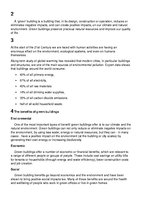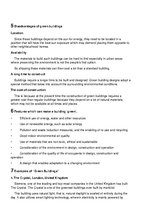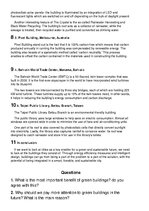-
Green Buildings for a Quality Living
Presentations15 Construction and construction works, Environmental Protection, Literature
9 4. Bahrain World Trade Center, Manama, Bahrain
The Bahrain World Trade Center (BWTC) is a 50-floored, twin tower complex that was built in 2008. It is the first-ever skyscraper in the world to have incorporated wind turbines into its blueprint.
The two towers are interconnected by three sky bridges, each of which are holding 225 kW wind turbine. These turbines supply up to 15% of the twin towers need, in other words, it helps in reducing the building’s energy consumption and carbon discharge.
10 5. Taipei Public Library, Beitou Branch, Taiwan
The Taipei Public Library Beitou Branch is an environmental-friendly building.
The public library uses large windows to help save on electric consumption. Almost all windows are opened wide in order to minimize the use of fans and air-conditioning units.
One part of its roof is also covered by photovoltaic cells that directly convert sunlight into electricity. Lastly, the library also captures rainfall to conserve water. Its roof was designed to catch rainwater and store it for use in the library’s toilets.
11 In conclusion
If we want to look at cities as a key enabler for a green and sustainable future, we need to look at the buildings they consist of. Through energy efficiency measures and intelligent design, buildings can go from being a part of the problem to a part of the solution, with the potential of being integrated in a smart, liveable, and sustainable city.
…
What is a green building? A green building is a building that, in its design, construction or operation, reduces or eliminates negative impacts, and can create positive impacts, on our climate and natural environment. Green buildings preserve precious natural resources and improve our quality of life.















